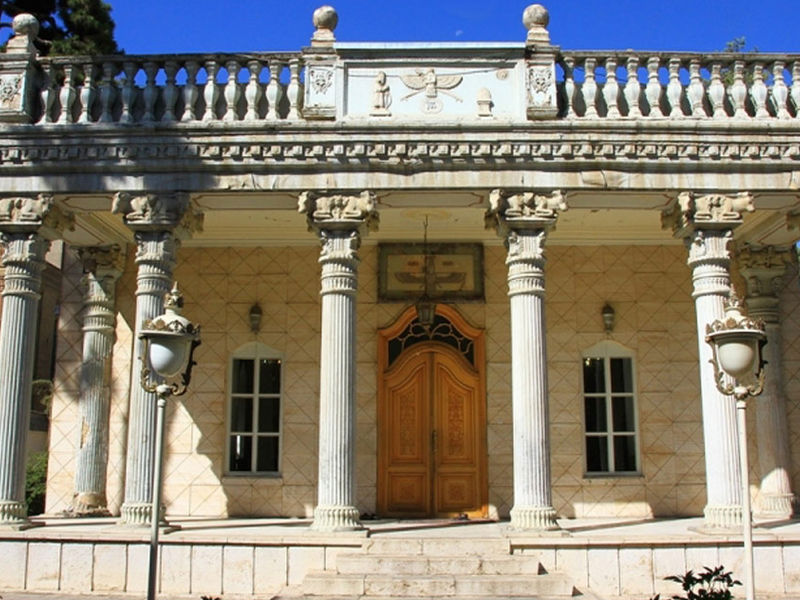Iran is renowned for its rich cultural and historical heritage, notably including its magnificent fire temples. These ancient structures hold immense significance in Zoroastrianism, one of the world’s oldest religions. In this article from Eligasht, we will take a virtual tour of ten remarkable fire temples in Iran, each with its own unique history, architectural beauty, and spiritual importance.
Book Iran Air flights from London to Tehran and Tehran to London with Eligasht UK:
The Significance of Fire Temples in Zoroastrianism
Zoroastrianism, dating back over 3,000 years, places great importance on the purity of fire as a symbol of divine presence and enlightenment. Fire temples serve as sacred spaces where Zoroastrians worship and maintain a sacred fire that has been burning continuously for centuries. The fire represents the eternal flame and the divine light of Ahura Mazda, the supreme deity in Zoroastrianism.
Historical Background
The establishment of fire temples in Iran can be traced back to the Achaemenid Empire, around the 5th century BCE. However, the religion itself predates this period. Fire temples were centers of religious practice and served as gathering places for the Zoroastrian community. Over time, as Zoroastrianism spread across the Persian Empire, these temples became more elaborate in their design and construction.
Architecture and Design
Fire temples in Iran exhibit unique architectural features that reflect the spiritual beliefs and practices of Zoroastrianism. Traditional fire temples consist of a central chamber known as the Dar-e Mehr, where the sacred fire is kept. The Dar-e Mehr is typically circular or square-shaped and is designed to allow the fire to burn without being extinguished by wind or rain.
The sacred fire is housed in a metal vessel called an Atashgah, which is placed on a pedestal or altar. The Atashgah is meticulously tended to by Mobads and is continuously fed with fragrant sandalwood, pomegranate wood, or other aromatic substances.
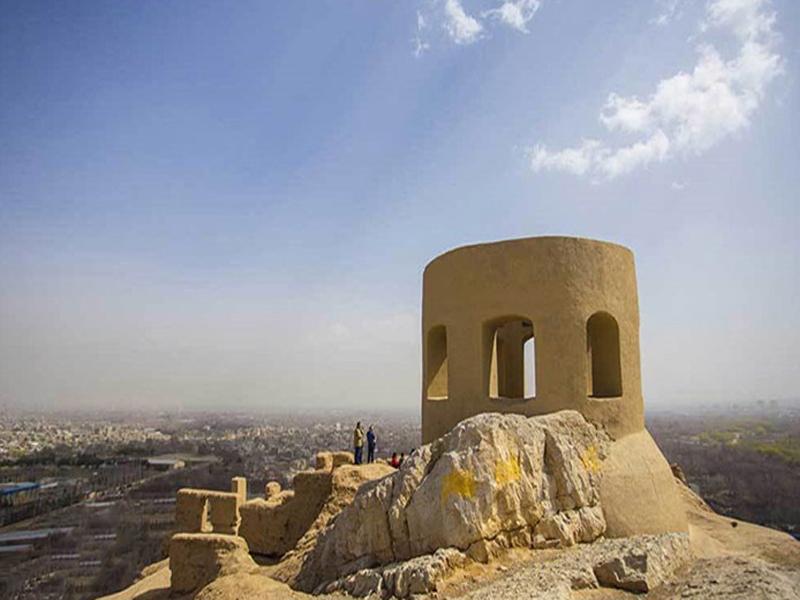
The exterior of the fire temple often features intricate carvings, ornate tile work, and symbolic motifs such as the Farvahar, a winged symbol representing the eternal soul. The architecture of fire temples varies across different regions of Iran, showcasing the diverse artistic styles and influences prevalent throughout history.
Azargoshnasp Fire Temple
The renowned Azargoshnasp Fire Temple, also called Azargoshasb, is an impressive and well-known fire temple in Iran. It is situated in the West Azerbaijan province, approximately 45 kilometers northeast of Takab, within the village of Takht-e Soleiman. In fact, it is often referred to as the Takht-e Soleiman Fire Temple. With a history spanning over 3,000 years, this remarkable site has been officially recognized and listed as a UNESCO World Heritage Site.
The name “Azargoshnasp” originates from three Avestan words: “asp” meaning horse, “az” meaning fire, and “goshn” meaning male. Fascinating legends surround the construction and naming of this fire temple. According to one tale, King Khosrow, a powerful ruler of the Sasanian dynasty, encountered darkness and malevolent forces upon unlocking the gates of Bahman Castle. At that pivotal moment, a divine fire descended upon the reins of his horse, illuminating the world. Inspired by this event, Khosrow erected a fire temple at the site and christened it “Azargoshnasp” or “The Fire of the Male Horse.” Revered by Sasanian kings, Azargoshnasp stood as one of Iran’s holiest fire temples.
Azar Barzinmehr Fire Temple
The Azar Barzinmehr Fire Temple holds a significant place among Iran’s three sacred fire temples (Azar Goshasb, Azar Barzinmehr, and Karyan). It is situated in the city of Neishabur in Khorasan province. In the Pahlavi language, it is known as Atur Burgin, symbolizing the Majestic Fire of Mithra. Its origins can be traced back to ancient times, specifically to the era of Ashu Zoroaster. The Bundahishn, in Chapter 17, Verse 8, recounts that Azar Barzinmehr remained in existence until the time of Goshtasb, the Shah of Religion, who embraced the faith introduced by Ashu Zoroaster. Subsequently, Goshtasb placed the sacred fire on Mount Riwand in Azar Barzinmehr.
The Azarfaranbaq Fire Temple
The Azarfaranbaq Fire Temple, also known as the Karyan Fire Temple, stood as one of the prominent fire temples during the Sasanian era in Iran. It found its home in the city of Larestan, nestled within the Fars province, specifically in the village of Karyan. The Azarfaranbaq Fire Temple held a special significance for the Mobads, the Zoroastrian priests, and operated under the watchful eye of the esteemed High Priest Ardeshir Babakan. The privilege of beholding the sacred fire of Azarfaranbaq was bestowed solely upon the Mobeds and the kings, while the pilgrims were allowed to perform a ritual circumambulation around the fire temple. Positioned at the heart of the governing center for the Karyan tribe, this fire temple basked in the presence of diverse structures and palaces.
The name Azarfaranbaq derives its meaning from two words: “Azar,” signifying fire, and “Faranbaq,” embodying divine glory. The architecture of this fire temple boasts a distinctive cruciform shape, elevated upon a platform standing at a height of 5 meters. Historical accounts reveal that the Azarfaranbaq Fire Temple held the status of being one of the most eminent pilgrimage destinations across the Iranian plateau. Pilgrims journeyed to this sacred site with hopes of finding resolutions to their predicaments, offering tributes of gold, silver, and precious items as they sought assistance from the holy fire. Upon the fulfillment of their desires, expressions of gratitude were conveyed through the ritual sacrifice of cows, sheep, and goats.
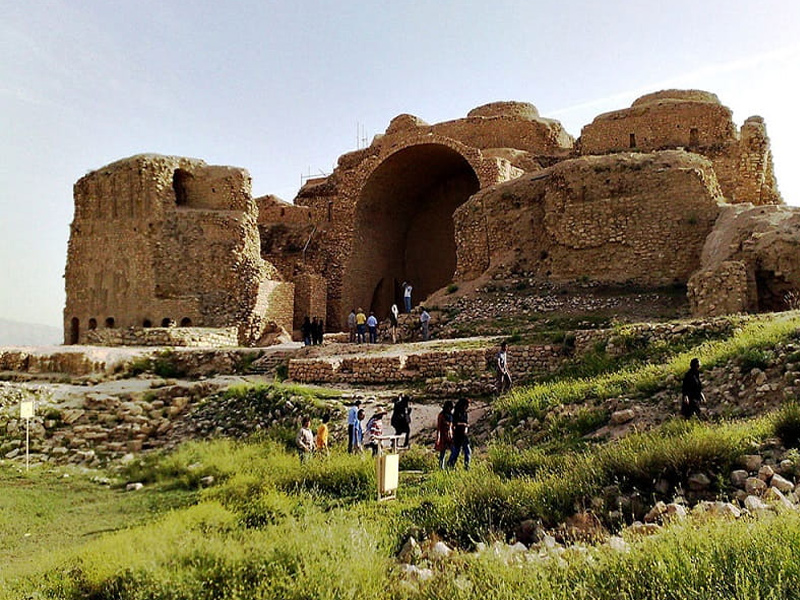
The Adorian Fire Temple
The Adorian Fire Temple in Tehran is one of the most important fire temples in Iran, built-in 1239 solar hijri. The Parsi and Zoroastrian communities in Tehran provided substantial financial assistance for the construction of the Adorian Fire Temple. Initially, the structure of the Tehran Adorian Fire Temple was made with brick facades. However, due to its popularity among Zoroastrians, the exterior of the Adorian Fire Temple was adorned with marble in 2000 years. The fire temple in question is located in the vicinity of the Firooz Bahram High School. This school was one of the scientific centers of Iran during the Qajar and Pahlavi periods, and visiting it is a delightful experience.
The Atashgah Fire Temple of Isfahan
The Fire Temple or Atashgah of Isfahan belongs to the Zoroastrians of Isfahan and is located in Najafabad. It is one of the famous attractions of Isfahan and was built during the Sassanian era. It is known for its beautiful octagonal architecture, providing views from eight directions, and allowing visitors to observe the surrounding plains up to a distance of 100 meters. In 1951, it was registered as a national heritage site. This Fire Temple is the third-largest historic structure in Isfahan and was previously known as Dezh-e Mehrbin. According to some accounts, this Fire Temple served as a place for safeguarding the sacred fire.
Additionally, the Atashgah is a brick chamber with an octagonal shape and a window. It used to be the location of the eternal fire, and currently, visitors can enjoy panoramic views of the city from there.
Related post:
The Most Magnificent Mosques in Iran with Unique Architectures
Lakes in Iran: A Dreamy Destination for Spring Travel
The Bahram Fire Temple
The Bahram Fire Temple in Yazd holds a significant place in history, consisting of both a temple building and the sacred fire it houses. Constructed with financial support from the Parsians, and Zoroastrians residing in India, the temple was erected during the reign of Reza Shah. Adjacent to the main building, a water reservoir ensures a steady water supply for the entire complex. Additionally, the Vardjavand Hall, built by the esteemed Vardjavand family, serves as an exhibition space within the temple grounds.
The Bahram Fire itself, preserved within the temple, boasts a remarkable history spanning approximately 1500 years. It is the original fire from the renowned Azarfaranbaq Fire Temple of the Sasanian era in Fars. After the Arab invasion, the fire was discreetly relocated for many years, finding temporary refuge in the Ashkoft Yazdan cave near Aqda and later in Zoroastrian villages like Sharifabad in Ardakan. Eventually, during the Pahlavi era, the fire found its permanent home within the Yazd Fire Temple.
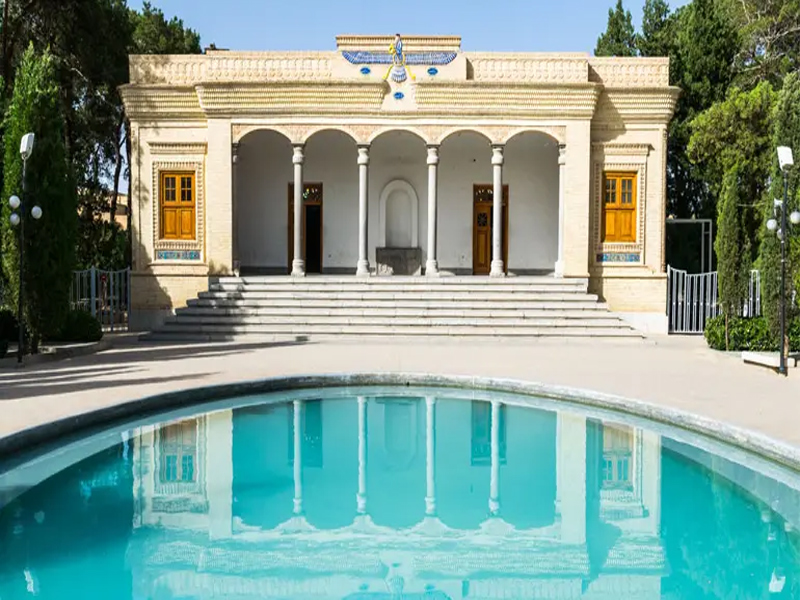
Rey Fire Temple
The Tapeh Mil, also known as the Bahram Fire Temple or the Rey Fire Temple, is one of the Sassanian-era monuments located near the city of Rey, Tehran. It is situated on a vast hill around 12 kilometers southeast of Rey, towards Varamin. The Tapeh Mil is located approximately 2 kilometers south of the Qaleh Now neighborhood in the Kahrizak district of Rey County, atop a tall hill in the village of Qaleh Now.
The remains of the palace, known as the Bahram Palace, were built on two large pillars and resemble a mill from a distance, hence the name Tapeh Mil. Part of the Rey Fire Temple was destroyed during Alexander’s invasion of Iran, and only a portion of the four-roomed and beautiful structure of the fire temple remains in the form of two mills.
Fire Temple of Firuzabad,
The Palace of Ardeshir Babakan, also known as the Fire Temple of Firuzabad, is one of the remarkable historical fire temples in Iran, located in Fars province. This ancient complex dates back to the Sasanian period and is recognized as one of the country’s tourist destinations due to its ancient origins and unique beauty. The architectural design of the Palace of Ardeshir resembles a fire temple, hence it is known as the largest fire temple in Fars province, consisting of three main sections.
This palace was built during the Sasanian era in the 3rd century AD by Ardeshir Babakan, one of the founders of the Sasanian dynasty. With its distinctive and beautiful architecture, the Palace of Ardeshir is considered a magnificent artistic masterpiece. Additionally, due to its proximity to water, the palace was used as a fire temple and was initially known as the Fire Temple of Firuzabad. This historical site, referred to as the largest fire temple in Fars province, is a testament to the ancient history and authentic Iranian culture of the land, as well as a masterpiece of Sasanian architectural art.
The Kousan Fire Temple
The Kousan Fire Temple in Behshahr, Mazandaran province, Iran, is one of the few well-preserved fire temples in Iran. It served as a place of worship for Zoroastrians in the past and remains intact today. The temple is located on a high hill near the village of Kousan, previously known as Asyabsar. The construction of the temple is attributed to Khosrow Anushirvan, a ruler during the Sasanian period. Coins from the Sasanian era found within the temple support its historical significance. The Kousan Fire Temple was registered as a national heritage site in 2001.
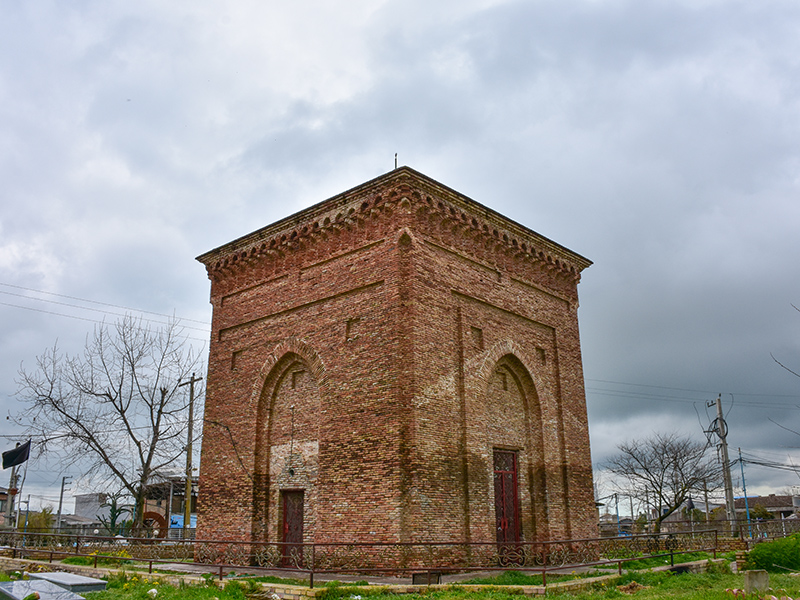
Karkooyeh Fire Temple
Karkooyeh Fire Temple is located in the village of Khamar, eight kilometers west of Hirmend city, near the wetlands of the Sistan region and close to the Iran-Afghanistan border. It is part of the historical complex along with the Takht-e-Pol bridge, connecting the Saravan River to Zaranj (Sistan) and Herat.
Karkooyeh or Karkooshah is the remains of a fire temple dating back to the Achaemenid era. It consists of an adobe-brick defensive wall of an ancient city and includes several large and small structures. This section features a hall that is 11 meters long and 8.5 meters wide.
Final words
The fire temples in Iran stand as powerful symbols of religious devotion, architectural splendor, and cultural heritage. Each of these ten remarkable temples offers a glimpse into the ancient traditions and beliefs of Zoroastrianism. Whether you are a history enthusiast, a spiritual seeker, or an admirer of architectural wonders, a visit to these fire temples is sure to leave you awe-inspired by the enduring legacy of Iran’s cultural and religious heritage.
FAQ
1- What is a fire temple?
A fire temple is a place of worship for followers of Zoroastrianism, an ancient religion originating in Iran. These temples are dedicated to the sacred fire, which holds great spiritual significance in Zoroastrian rituals.
2- Why are fire temples important in Iran?
Fire temples are important in Iran because they are central to the practice of Zoroastrianism, which was the dominant religion in ancient Persia. These temples serve as a gathering place for Zoroastrians to engage in worship, prayer, and spiritual reflection.
3- What are some famous fire temples in Iran?
Iran is home to several famous fire temples that hold significant historical and cultural value. Some of the most important fire temples are the Azar Goshnasp Fire Temple, Bahram Fire Temple, and Azar Faranbaq Fire Temple.
